Before commercial radio and the first 78s were pressed, if you wanted to hear music, your best bet might have been finding a church. From rural chapels to urban cathedrals, hymns to spirituals to chants, church and music have always gone hand in hand, made common not by genre but by purpose.
Today, one of the most popular styles of religious music is gospel. Born out of the evangelical South, gospel music helped shape—and was then shaped by—RnB and soul. The proliferation of vanity presses and independent record labels in the ’60s and ’70s made it possible for thousands of church bands and choirs to be heard outside of the congregation. They helped establish gospel music’s revered place in the annals of recorded music.
Greg Belson has become an authority on the subject. He’s been unearthing rare and forgotten gospel records for over 25 years and is on a mission to share them with the world. His latest compilation, Divine Disco, was released last summer by Cultures of Soul Records, and his monthly radio show, The Divine Chord Gospel Show, is now in its sixth year. Dust & Grooves sat down with Belson in his Los Angeles home, where he walked us through how he puts a show together and talked to us about his life as a crate digger.
“I focus on heavy melodies, chord changes, arrangements, and anything that has a particularly soulful feel. As long as there’s a feel I can relate to, the music itself doesn’t have to be genre-specific.”
Introduce yourself. Who is Greg Belson?
I was born in 1969 in Kingston Upon Thames, about sixteen miles south of London Town, UK. I’ve been a record collector of all things soulful for the last 30 years. I moved my base to California over 10 years ago and DJ around the globe regularly.
What do you look for in a record?
I pay attention to the drums and vocals first and foremost. Drum production fascinates me, so I always keep an ear out for the way tracks are produced and manufactured, given the ever-changing tools available in a studio. And then, I focus on heavy melodies, chord changes, arrangements, and anything that has a particularly soulful feel. As long as there’s a feel I can relate to, the music itself doesn’t have to be genre-specific.
What kind of music was playing in your house growing up? Did your parents have records?
My folks weren’t really into records. I remember a small stack of UK-pressed LPs underneath the stereo in the living room, including Creedence Clearwater Revival, Elvis, and a few platters by Dolly Parton. I fondly remember my Mum owning a reel-to-reel tape machine and listening to the only tape she had. The most memorable of all the tunes included on the tape was Arthur Brown’s “Fire.”
Do you remember your first record?
The first record I owned was bought by my folks when I was sick one year. It was The Bay City Rollers, Once Upon a Star. They might’ve been secret fans themselves because they bought me another LP by them a few months later.
One of the first tunes I bought with my own money was a 3-pack special from Records & Tapes in Tolworth, UK, that included Adam & the Ants’ “Stand and Deliver,” “Car Trouble,” and “Zerox.”
When did you start thinking of yourself as a record collector?
In my early teens, I bought the odd record here and there as my hometown had a few well-stocked record stores. When I was about fifteen, I purchased two Parliament Funkadelic LPs (One Nation Under a Groove and The Electric Spanking of War Babies) from the store Books, Bits & Bobs, and it was there that the owner told me about a big record fair in London. So, one month circa 1987, I plucked up the courage, scraped some money together, and went digging. I became a collector when I walked through those doors, clutching my tiny pencil-written wants list.
How did you get into gospel music?
I started paying close attention to it around 1993. As an avid collector of soul and funk, I’d already picked up a few gospel tunes related to various labels, but I’d never really bought wholesale into the genre. I went on a buying trip in mid-1994 and started looking through the gospel sections often. It kicked into some kinda high-gear obsession from 2000 onwards.
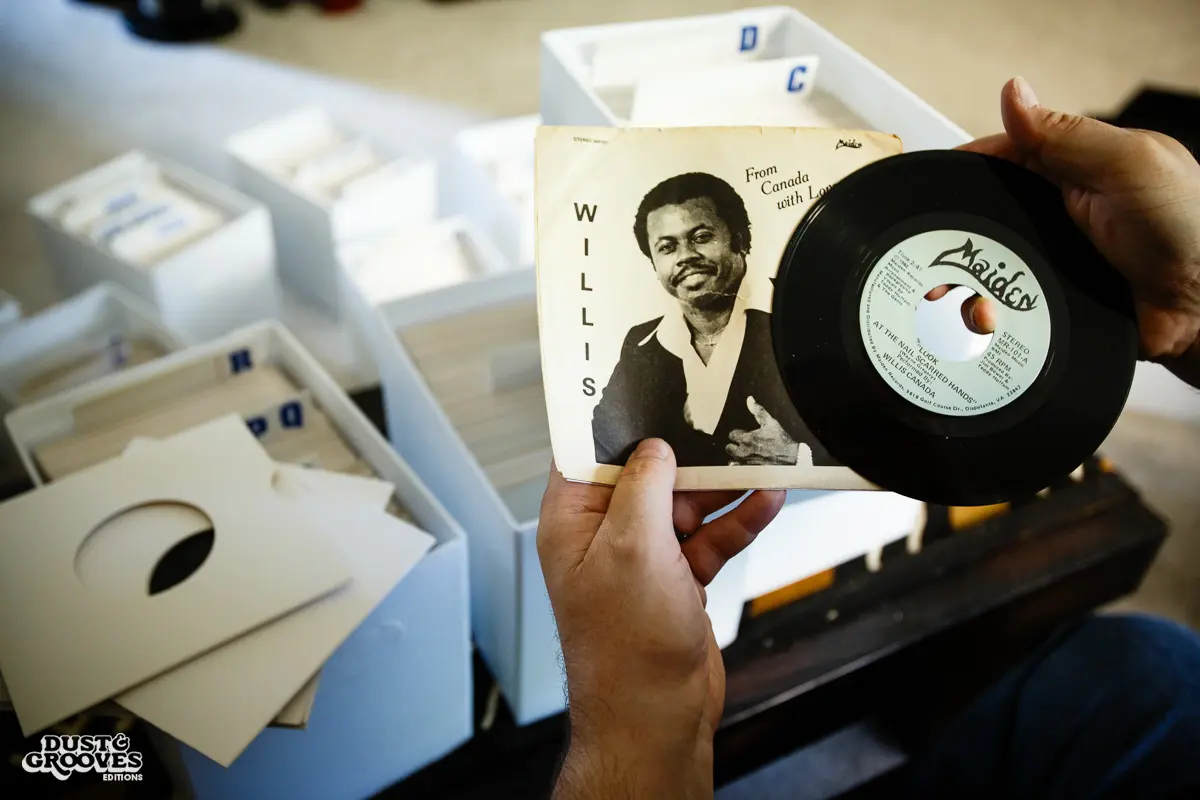
Willis Canada – “Look at the nail-scarred hands.” A sublime, ethereal ballad performance by Willis Canada, complete with a picture sleeve. A very cool collectible item, for sure!
“The key is to keep the listener on the same journey as me, always on the edge of discovery, experiencing tunes for the first time. We advertise it as ‘Soul music you might not have heard before.”
Was there a specific gospel record that started this?
The gospel album that really launched my passion was Clarence Smith’s Whatever Happened to Love, featuring “Sometimes I Feel Like A Motherless Child.” The legendary DJ Snowboy was playing it in the club I was promoting, and he announced it on the mic as his brand-new discovery. I went home that night and went through all my record lists, looking for a copy.
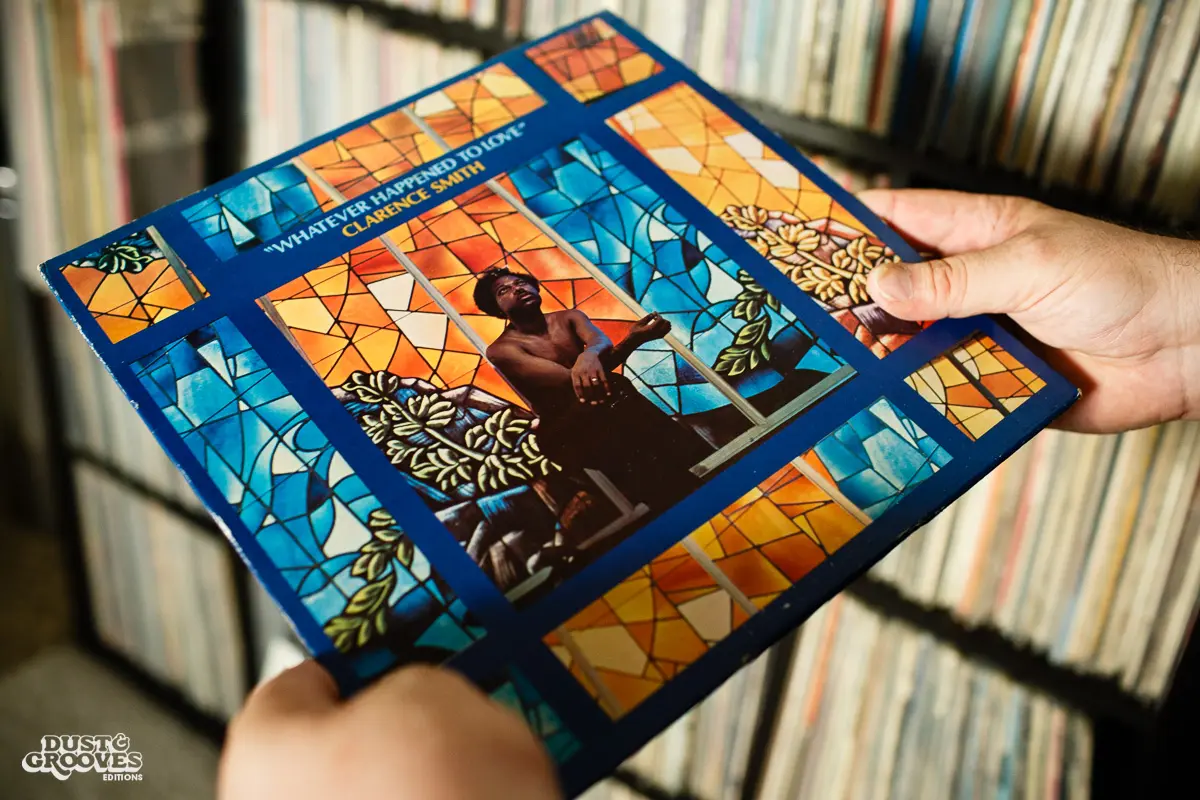
Clarence Smith – Whatever Happened To Love. “This is the first LP that really sparked my interest in gospel and its soulful potential. It contains one of the funkiest versions of the staple ‘Sometimes I Feel Like a Motherless Child,’ and it is an essential recommendation for exploring this fascinating genre.”
“When disco and modern soul were extremely popular, churches seized the opportunity to spread their message by recording records that plagiarized grooves and riffs from secular songs.”
How did The Divine Chord Gospel Show get started?
The show is well into its sixth year, launching on June 30, 2011. The amazing LA creative hub, Dublab, approached me with designs to broadcast a live show and join their ever-expanding roster of DJs. Needless to say, it was an honor to be asked, and it’s been an incredible ride so far, with listeners tuning in worldwide.
Can you walk us through how you put a show together?
Almost every show has three parts: uptempo, downtempo, and then something more DJ-focused, like RnB, modern soul, funk, and disco. About seven 45s per section will produce a show. I put the records in order, then broadcast them live at the studio.
The key to each show is that there are no duplicate plays from broadcast to broadcast. The one exception is the end-of-year recap show; that’s the only time you’ll hear a tune played twice. The key is to keep the listener on the same journey as me, always on the edge of discovery, experiencing tunes for the first time. We advertise it as ‘Soul music you might not have heard before.’
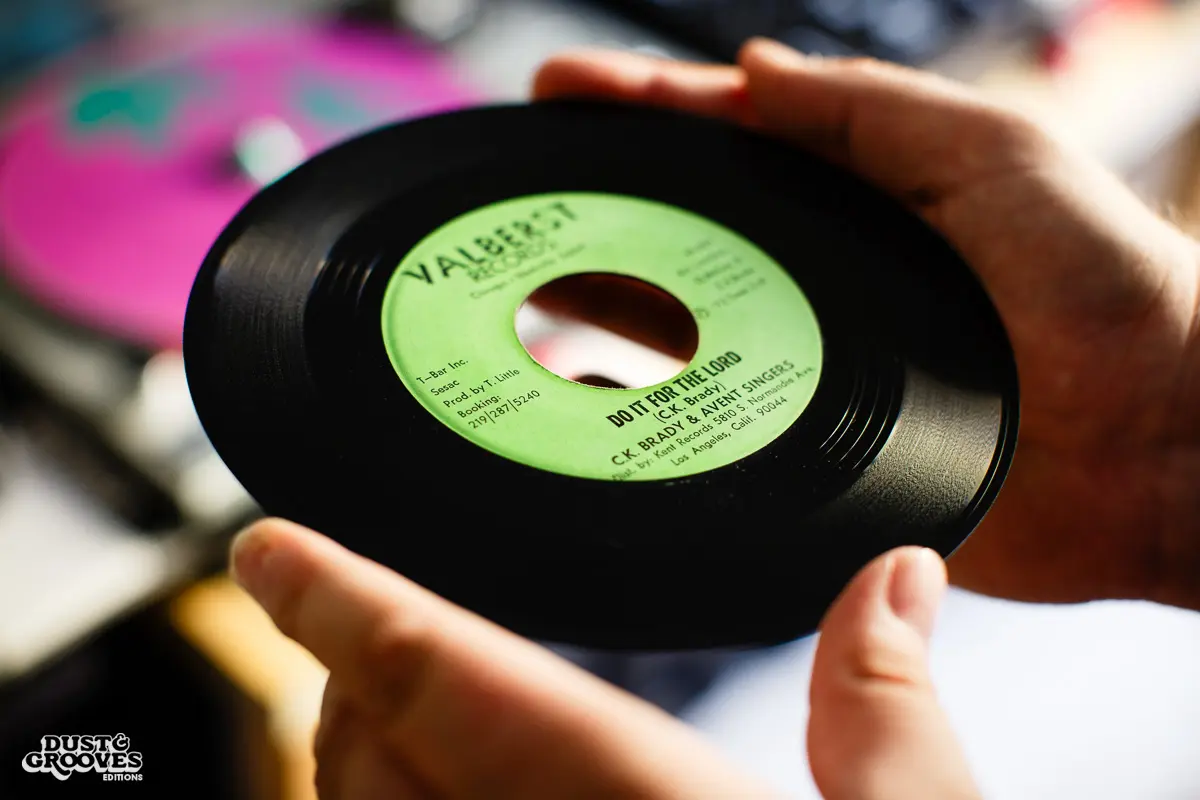
C.K. Brady & Avent Singers – “Do it for the Lord.” “Straight out of Chicago comes this furious funk cut with some of the hardest, blazing drums I’ve heard. It’s a riff rip of Isaac Hayes’ ‘Do your thing’ re-dubbed ‘Do it for the Lord’…heavy, heavy stuff.”
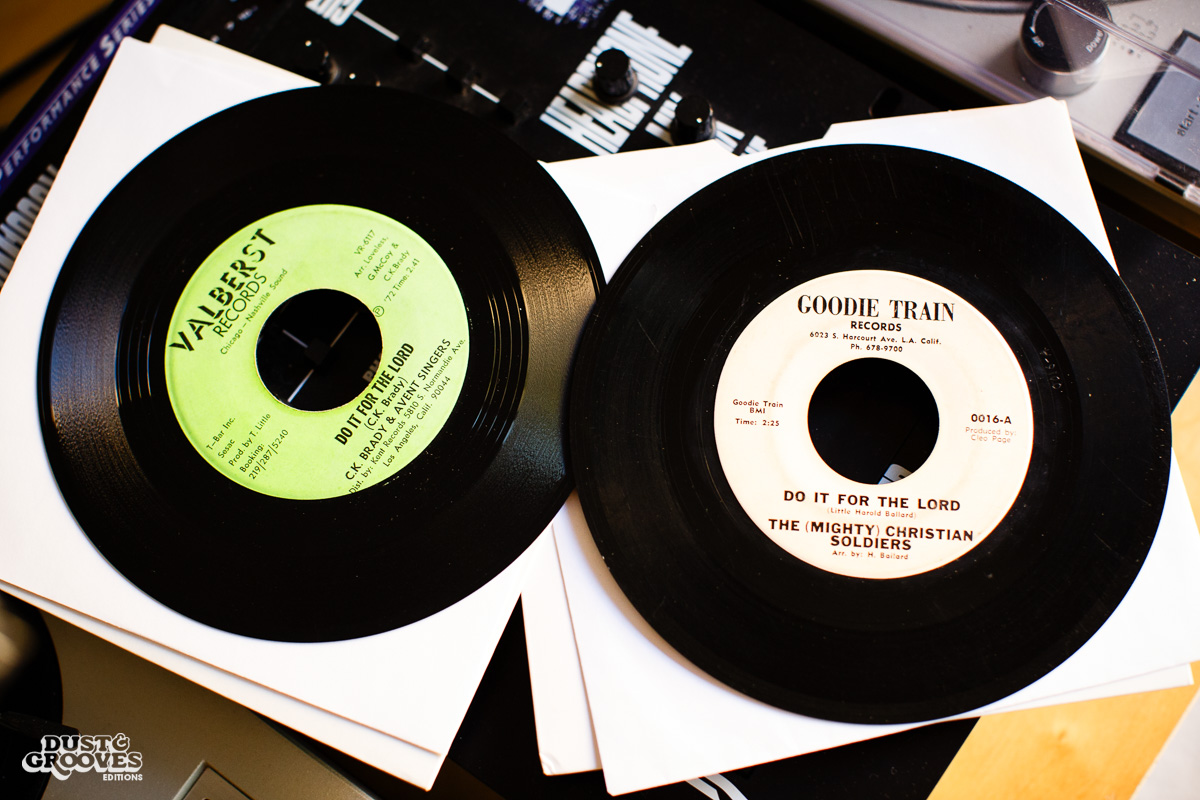
C.K. Brady & Avent Singers – “Do it for the Lord,” The Mighty Christian Soldiers – “Do it for the Lord.” “Another funky ‘gospelization’ of Mr Hayes’ tune. This time, the label location is from Los Angeles and recorded for the minorly successful Goodie Train label.
How did the Divine Disco compilation come together? How deep of a pool is gospel-disco?
Divine Disco as a concept came together circa 2014 when Jeff Swallom from Cultures of Soul approached me to work with him on a compilation. The process started as a simple idea: assemble some tracks to make a great set and go from there. The licensing, however, was far from simple. Cultures of Soul worked hard to clear some amazing music, but there were a few casualties along the way. Keep in mind that a lot of these recordings were funded by the church and recorded by members of the church, so it wasn’t exactly a straightforward or traditional business arrangement.
In some cases, the church kept the profits, and the artists argued that this wasn’t fair. The conclusion was often to have the stock destroyed. Jeff came across a few artists who absolutely didn’t want to relive this memory. He could have been searching for six months to locate the rights holder, only to be met with a flat “no.” There was a lot of time involved in getting everything legally sorted out. The fantastic news is that the release was met with great critical acclaim around the globe, and Volume 2 is scheduled for release in the near future.
Gospel is a massive genre with many subgenres, disco being one of them. When disco and modern soul were extremely popular, churches seized the opportunity to spread their message by recording records that plagiarized grooves and riffs from secular songs. It broadened the accessibility and the appeal of the church to a younger audience. From 1974 to 1984, the output was quite intense, and it feels like we’ve only just started to scratch the surface of finding these records.
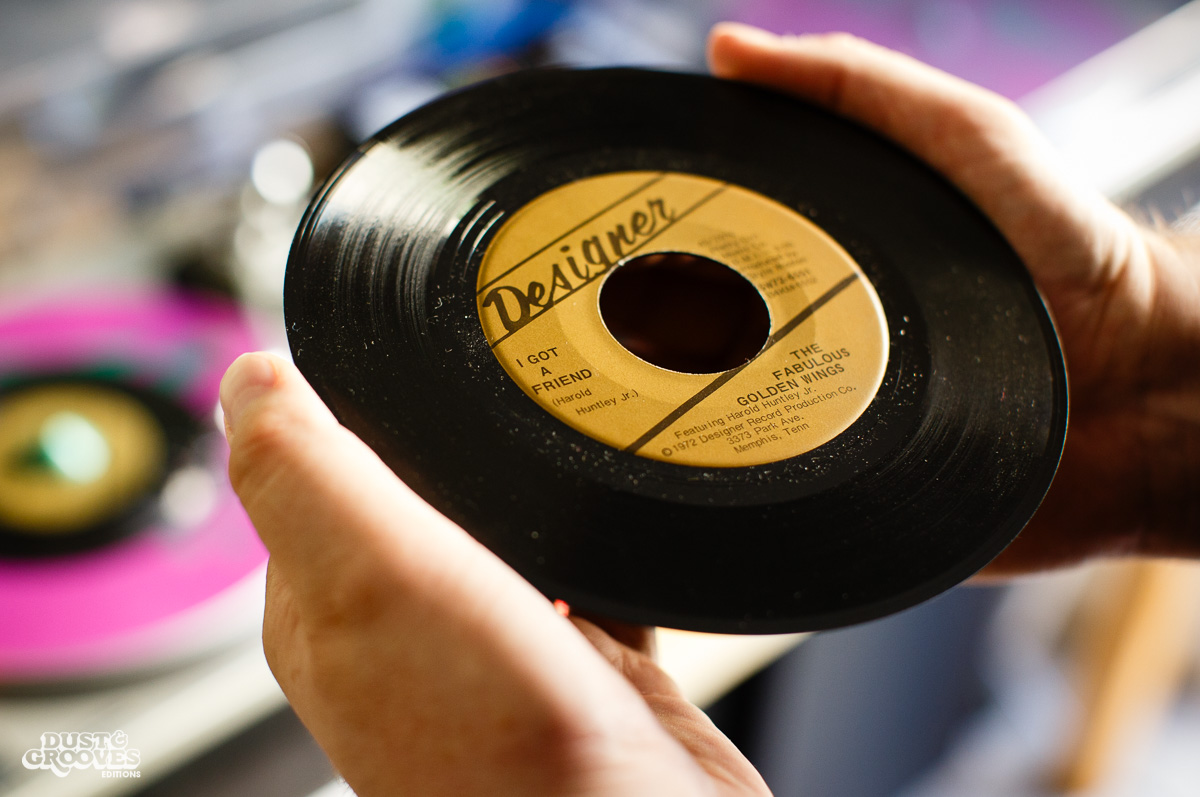
The Fabulous Golden Wings – “I Got A Friend.” “It is one of the finest sweet soul records of the period, and it crosses over into secular territory. Designer was a label that often suffered with quality, but when it’s good, it’s astounding!”
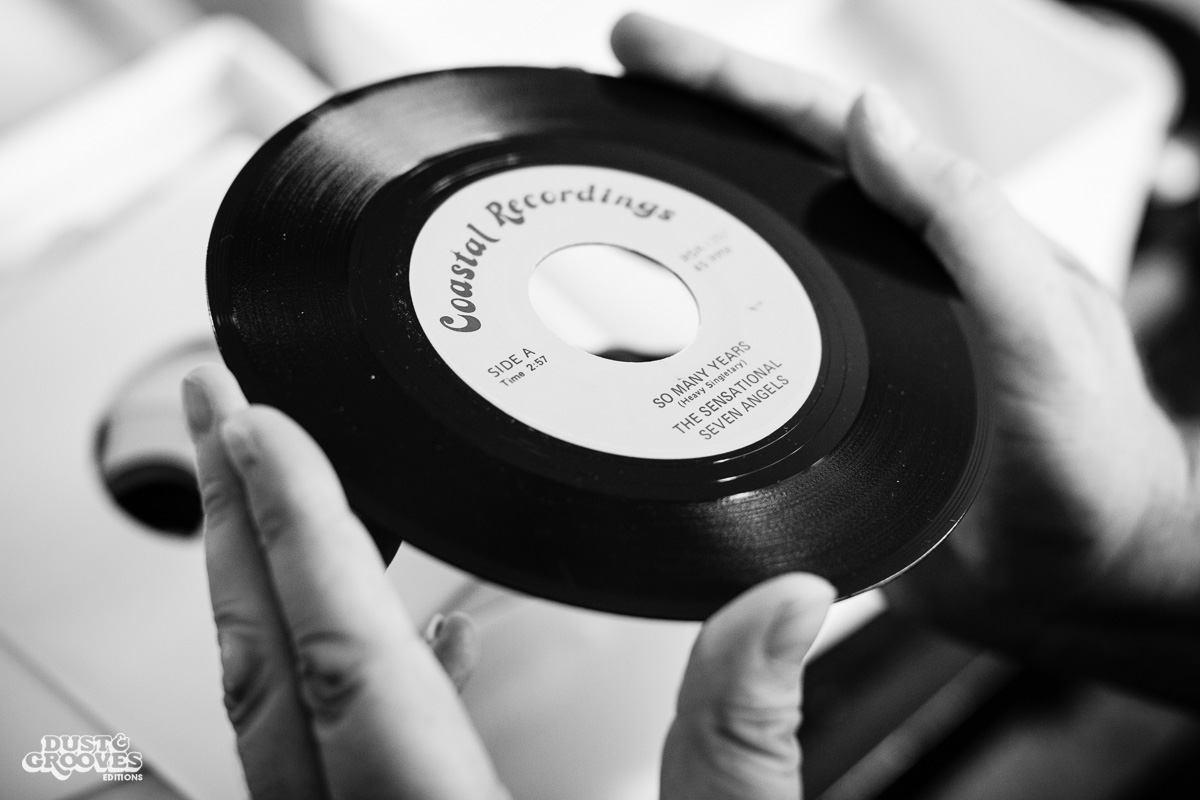
The Sensational Seven Angels – “So Many Years.” “An astonishing piece of vocal harmony music, verging on sweet soul territory. A huge rarity by all accounts.”
“You don’t have to be religious to understand the feel, power, and pure emotion gospel musicians and artists deliver.”
Do you ever get funny reactions to playing gospel in clubs?
Surprisingly, yes! In 2015, at a Soul Weekender, the first track I played was a rare take of “Wade in the Water” by Annette Briggs and the Voices of Soul. It’s a great version, super dance-floor friendly, and leads in with this killer open-kick drum. Once the rhythm and melody dropped, one guy charged the decks, yelling, “You know this is soul night, right!?” I cheerfully pointed to the lively dancefloor he had just barged through. That’s the only time I’ve had a problem, and I’d say he alone was having the problem. The strange thing is, Marlena Shaw’s version of “Wade” is considered a classic at that particular club, so go figure.
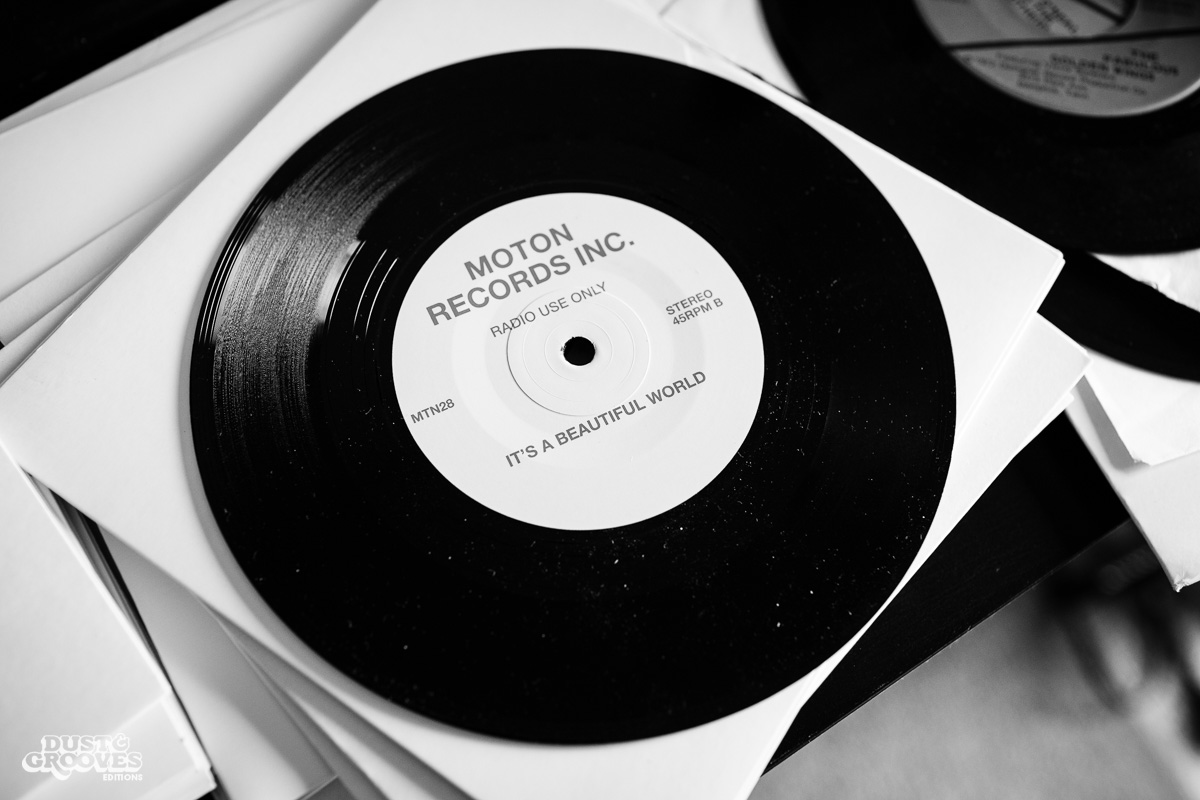
Moton Records, Inc. – “It’s A Beautiful World.” “Here’s a recent gospel modern soul re-edit; the interruption of the body of the main track works any dancefloor like a champ! ‘It’s a beautiful world,’ indeed.”
Are you religious?
I don’t profess to any religion per se. I believe it’s up to the individual to make decisions regarding religion. I usually try to move away from that type of question, as this is all about my personal journey through this music. You don’t have to be religious to understand the feel, power, and pure emotion gospel musicians and artists deliver.
Have you ever attended a church simply to experience the gospel played live?
Actually, no, I haven’t. I need to do it, though, and I’d say it’s on my bucket list!
Are gospel artists themselves always religious?
That’s a difficult question for me to answer because it would be based purely on speculation on my part. I would assume yes, as many gospel records were recorded by pastors or reverends with groups formed by church members. I doubt there was very much pressure for secular artists to fake being religious, certainly when it came to being a popular recording artist. But the question isn’t for me to answer.
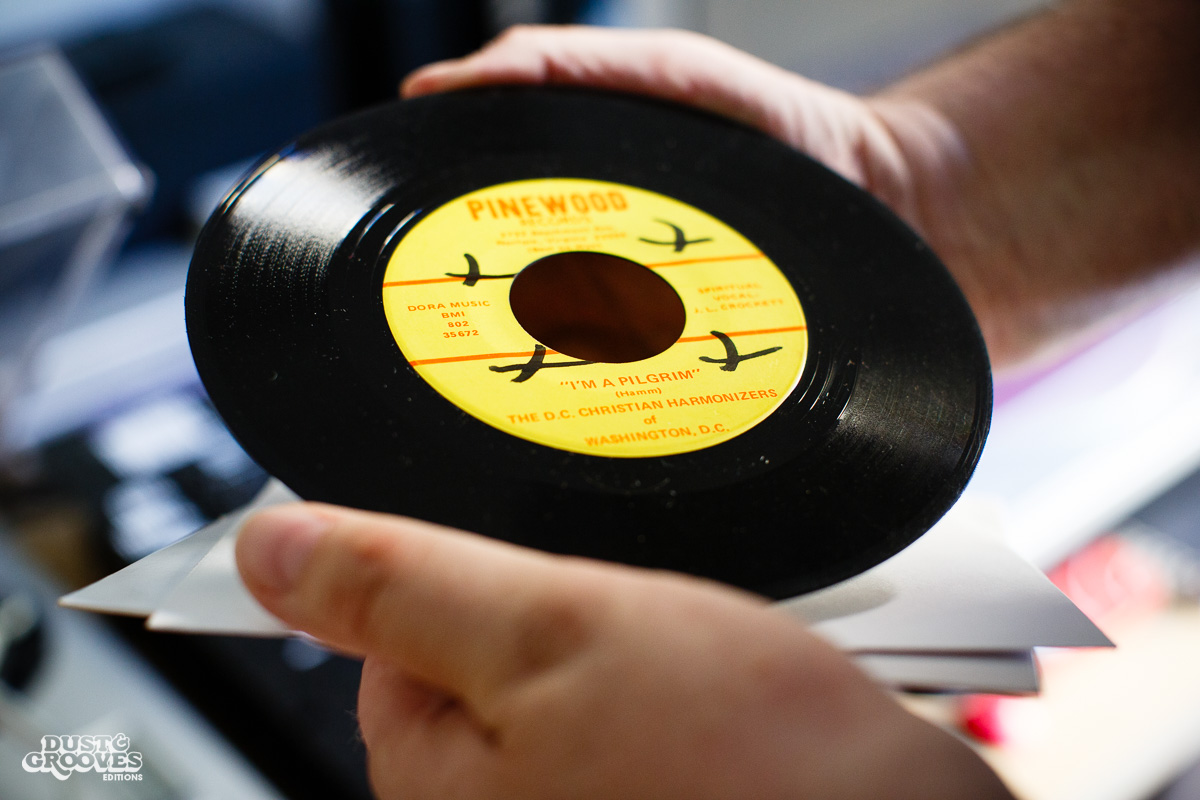
The D.C. Christian Harmonizers of Washington, D.C. – “I’m A Pilgrim.” “Without a doubt, Pinewood is another label worth seeking out. The catalog is rich in diversity and rarely dips away from top quality. From the funkier side of their catalog, here is one such offering.”
Is there such a thing as British gospel?
Yes, and there are some amazing recordings to seek out. The fantastic Paradise band released LPs in the early ’70s. Kainos, who doubled as a reggae band, produced some great gospel music. Out of those bands came vocalists like Paul Johnson and Mica Paris and artists like Vivienne McKone and the Escofferys. These days, the House Gospel Choir is playing regularly, performing gospel takes of modern-day house and garage cuts. Really quite a spectacle!
Would you consider yourself to be an archivist of gospel music? Do you think of your own collection as a preservation of gospel history?
Absolutely. Naturally, the guys searching for obscure records day in and day out will often be the people who make the new discovery. In my opinion, it’s essential to document these works whenever possible. Many gospel artists have gone years with limited recognition or none whatsoever, so when I broadcast my Divine Chord Gospel Show, I provide full-track listings for all the tunes I play.
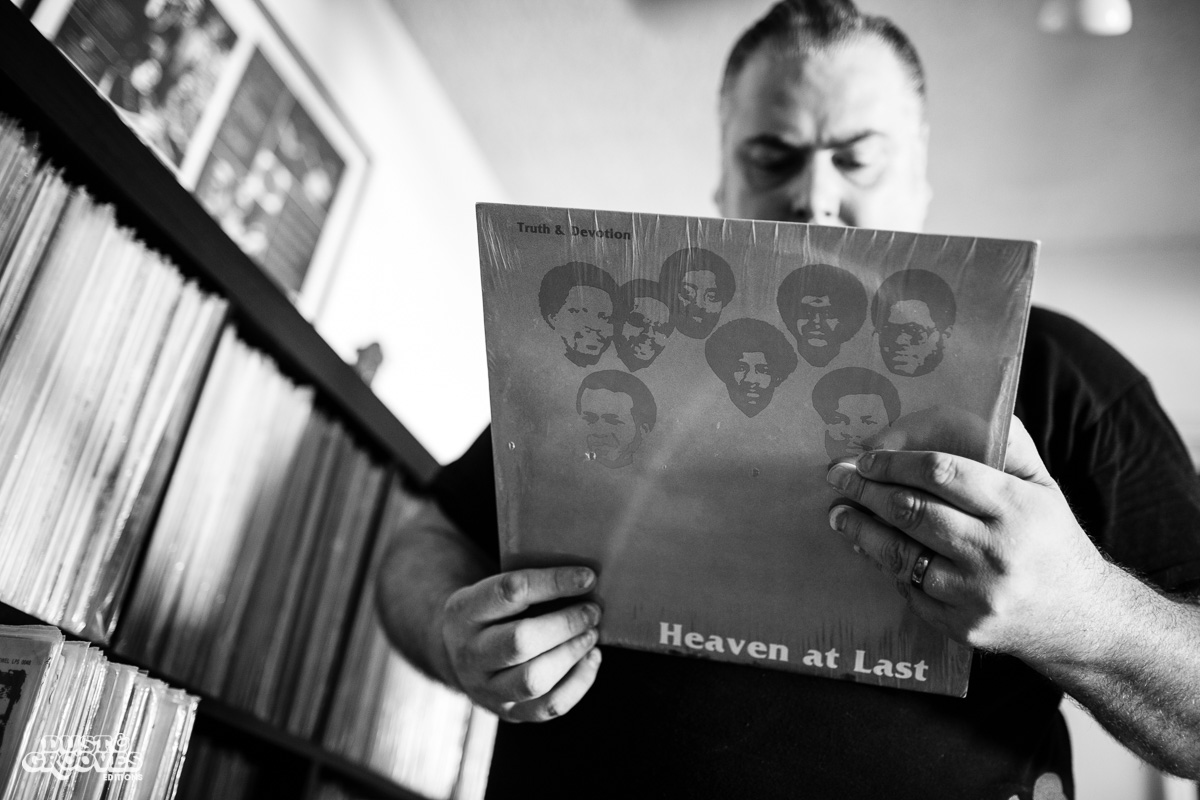
Truth & Devotion – Heaven At Last. “This one is from the 1980s, and almost every track is a killer! If you need a recommendation for a complete listen from uptempo dance grooves to slower cuts with a touch of soulful boogie, then look no further than this excellent LP.”
What distinguishes gospel from soul? Do the genres overlap?
Yes, they often overlap. The roots of soul come directly from gospel, which can be verified by following the careers of many secular soul artists who started their singing careers in their local churches. The basic gospel rhythm is more formulaic and less freeform than your stereotypical secular beat, but the vocal performances remain pretty much the same. The emotion carries a tune, the one key area in which the genres intertwine.
How do you organize your collection?
The smaller labels are kept together and alphabetized by the artist. I keep the larger labels separate and in alphabetical order.
“During the oil shortage in the US in the ’70s, alternatives to vinyl were explored to fulfill the increasing demand for records. Real vinyl has a long shelf life, and finding alternatives that are just as durable proved to be a tough undertaking.”
Do you have any record-collecting philosophies? Maybe a price you won’t pay or a total number of records you won’t go past?
My philosophy is, “If I want it, I’ll work out a way to own it.” I’ll either offer trades or sell some items to make up for the value being asked. So far, the price hasn’t really entered into the equation for me, but I’ve got a pretty high threshold compared to a lot of people. I’ve been collecting for a long time and think I’m pretty good at knowing market values and availability. If something comes along that I believe is too expensive for that particular tune, I’ll pass, no problem. I must also ensure everything is in good condition before bringing it home. I don’t like making huge bulk buys if most of it is junk. I’ll go quality over quantity all day.
Can you give us a couple of examples of gospel 45s with interesting, particularly important stories?
Premium Fortenberry, “All of God’s Children Got Shoes.” It’s one of the rarest releases on the Booker label, which is known for its spiritual releases. They had a distinct, low-budget sound, often with only a single voice and a guitar, usually bare and stripped down. It’s all about the delivery, the projection of the vocals. It’s pure soul that exemplifies what I look for in a record. I heard about this record from fellow gospel collector Joe Louis, and when one popped up on eBay, I had to pull the trigger.
Another would be Willie Dale’s “Let Your Light Shine.” The first batch of copies was discovered by collector Alex Rodriguez somewhere in Bakersfield, CA. What’s special about this record is the mystery that surrounds it. For starters, the artist’s name is fake, the street address is fake, nothing useful is given away on the label, and we have no account of what happened to the rest of the copies that might’ve been pressed. Lovie D owned the label, and sadly, he passed away. The only person connected to it who’s still alive is Willie Dale’s sister, who didn’t want anything to do with it. I find all of this to be totally intriguing. It adds to my enjoyment of collecting these amazing records when an air of mystery surrounds them.
Some of your records weren’t pressed on actual vinyl. Was there a push to find alternatives?
During the oil shortage in the US in the ’70s, alternatives to vinyl were explored to fulfill the increasing demand for records. Real vinyl has a long shelf life, and finding alternatives that are just as durable proved to be a tough undertaking. The industry turned to polystyrene records, which are far inferior in terms of longevity and audio quality. They have a much shorter number of plays in them. Experiments were conducted with all kinds of alternatives, including Dynaflex, which predominantly found a brief home in the LP market. The material itself was quite flimsy but cheap to make, and it was often married to the new audio technology of Quadraphonic Sound. Hence, the audio reproduction was actually quite good. Unfortunately, Dynaflex was too easy to scratch and damage, so it didn’t last particularly long, at least in comparison to vinyl.
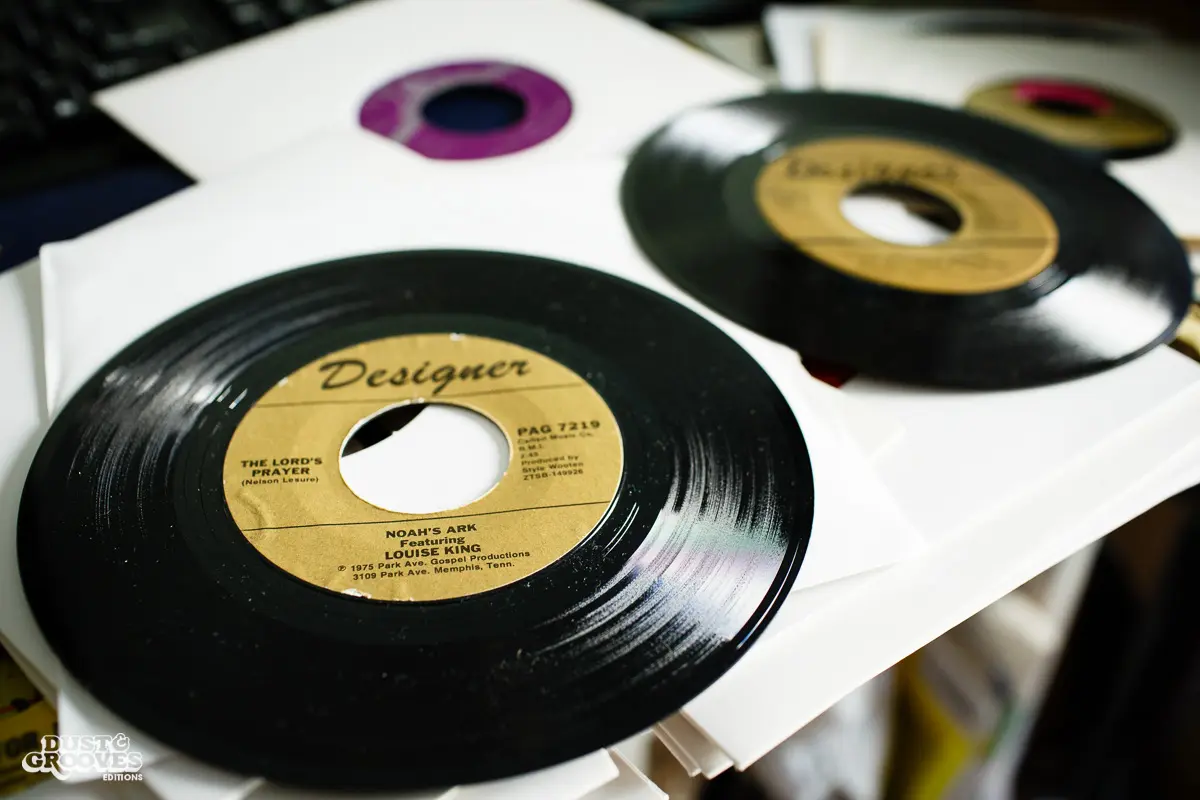
Noah’s Ark – “The Lord’s Prayer.” “Highlighting the playing surface difference between a styrene disc and a vinyl record. Also, note that the styrene disc in the foreground has the label glued on…the vinyl record at the back of the shot has the labels baked on, as the material is resistant to higher temperatures.”
Tell me about a memorable digging moment.
The most memorable digging moments are really more about the locations than the digs themselves. One particular standout was visiting the legendary Coachman’s record store in downtown Detroit a few years before he passed. The Coachman was a legend in Detroit, a blues DJ many regarded as royalty. His store was on the bad side of town. As my friend and I walked into his store, we were surrounded by clerks who wanted to know what business we were there for.
I saw this guy sitting in the back room wearing a blue shell suit, holding court to a few folks. When he heard our English accents, he jumped out of his chair, came to the front of the store, and welcomed us with open arms. He said, “Yeah, I’m the Coachman!” He instructed some of his workforce to stand outside and guard the car while we were scouring his store. I didn’t realize my buddy had made friends with the Coachman during an earlier visit.
Quite an amazing day going from “Are we gonna get outta here safely?” to the warmest of welcomes whilst shootin’ the breeze, digging for records. Those are the kind of digging experiences I hold dear. R.I.P. The Coachman.
What about the rarest dollar bin find?
I’ve had so many dollar bin finds over the years, so I guess I’ll say the most special was my first big gospel 45, which turned me into the genre in a serious way. I paid 25 cents for a mint copy of “The Elements” by The Lover’s of God in an antique store in Duluth, MN.
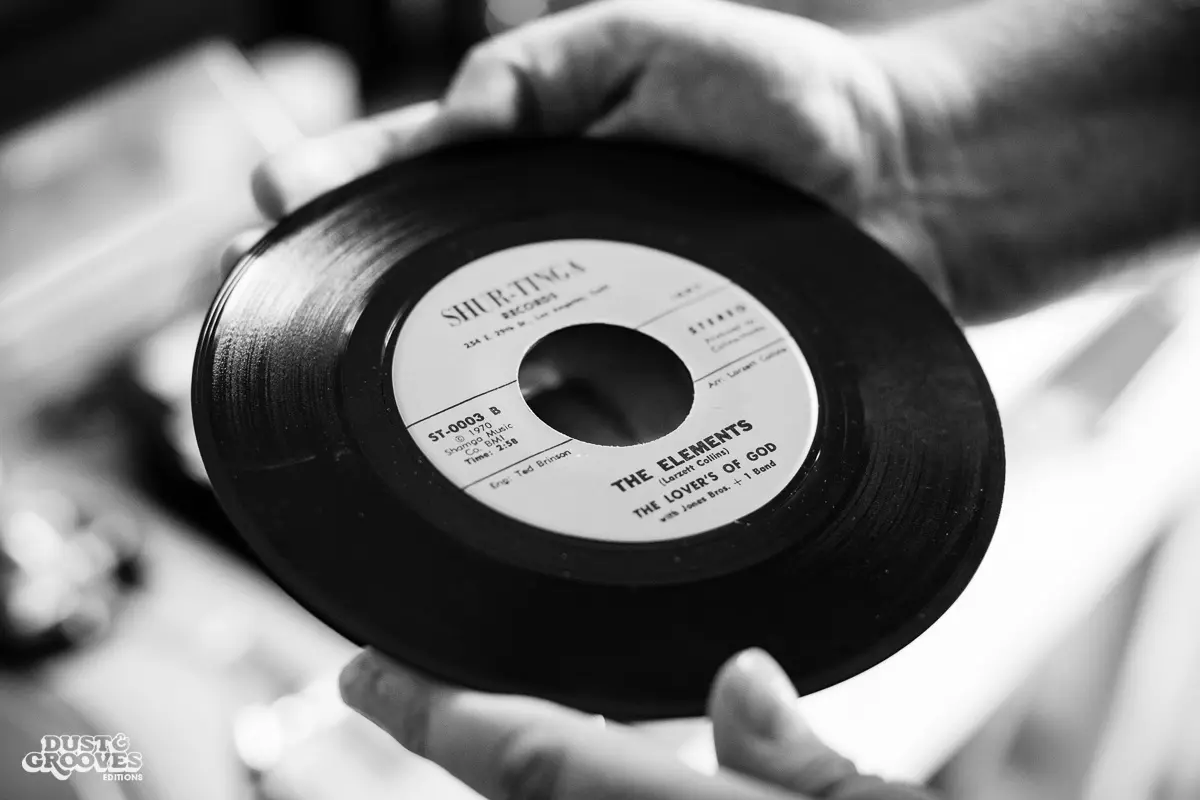
The Lover’s of God – “The Elements.” “One of my favorite 45s simply because it was my first serious gospel find out in the field, and it cost no more than 25 cents. Both sides are exquisite in vocal and musical delivery, so I was amazed when I pulled this out of a record stack in the Midwest. The legendary Ted Brinson in Los Angeles recorded it, which was a surprise to say the least!”
What about recent finds? Anything notable?
I’ve just returned from a three-day digging trip and picked up some nice 45s and LPs. A few things in there could easily be big records for me, both on the radio show and for DJing. So for the uptempo DJ nights, I’ll say the Gospel Travelers’ “Call Him Up.” Just a furious, funk-fueled dancer that could be a massive sound in Clubland. On the slower side, “Sweet Land” by The Mighty Pearly Gates is from Chalburn, NC. It has exquisite vocal harmonies and somber, mournful melodies. Simply brilliant!
Is there a cut-off year for the records you’re interested in?
I’ve found my boundaries have expanded while researching gospel. I’d say it’s generally anywhere between 1960 and 1990. The glorious thing about gospel is that a tune could be performed in the ’80s but recorded on equipment from the ’60s, so sometimes tunes can sound earlier than their actual creation date. The ’90s ushered in a more digital sound, which I tend to ignore, but if I hear a recording from ’91 that appeals to my ear, I won’t skip it.
Any favorite labels?
One of the most collectible labels in gospel is Champ, and it’s a path fairly well trodden by serious collectors these days. Aside from that, labels like HSE, Su-Ann, One-Way, Prestige (the small label from Birmingham, Alabama), Hummingbird, Designer, etc. These are always worth investigating. They connect the major labels like Savoy and Nashboro and the smaller, privately pressed labels. Ultimately, I like collecting the independently pressed music on tiny labels that may only have released a handful of titles. Those labels are especially important for catalog.
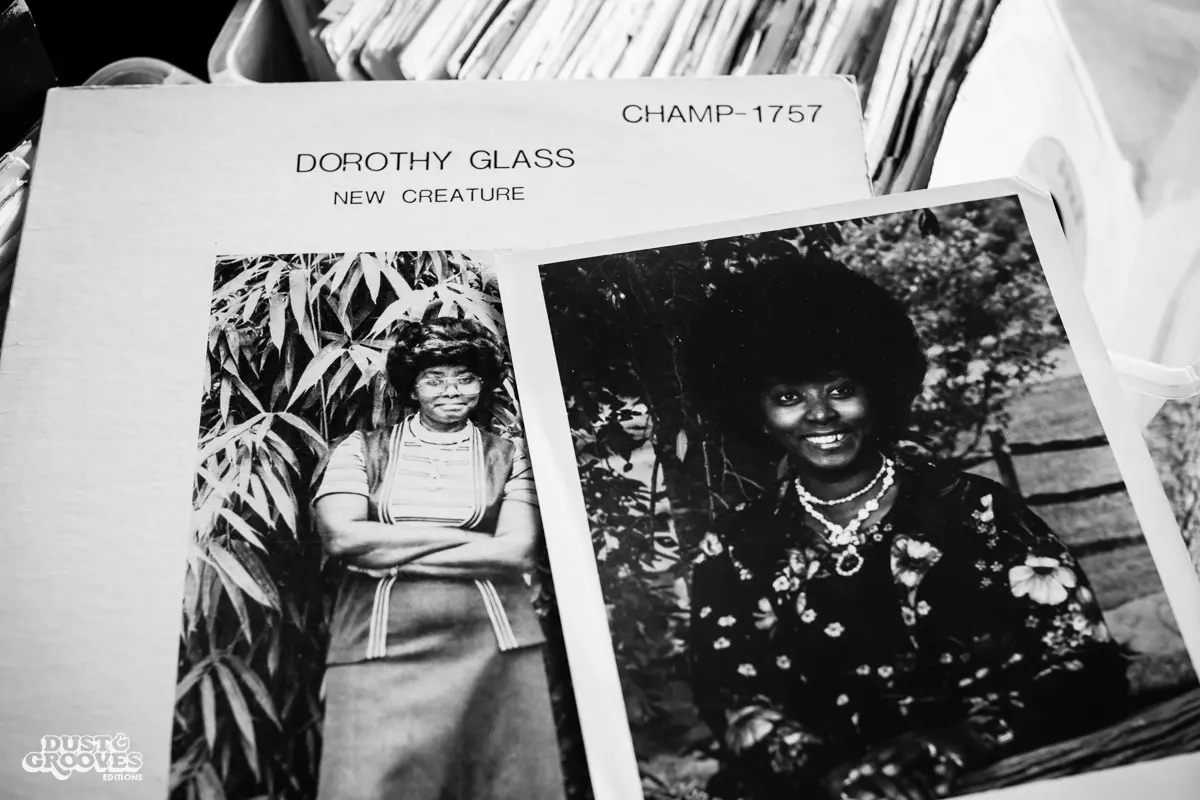
Dorothy Glass – New Creature. “One of the best LPs on the legendary Champ label…Dorothy Glass and her ‘New Creature’ offering. Beautiful vocals with yet another amazing promo shot.”
“Dusty finger diggin’ is absolutely essential for any serious collector of vintage records.”
How has collecting changed over the years? Is the internet good or bad for records?
I started casually buying records in 1985, and the learning process was a long and individual road. I had to go clubbing or tune into local and pirate radio stations to discover the music I sought. Finding the records themselves came from studying the mailed-out lists of rare records from companies like Soul Bowl, Soul Explosion, Hot Biscuit, Virgo Vibes, and Soul Brother Records.
Beyond those lists, it was all about making personal connections. The internet has changed that, and in some ways, it’s great that it’s so much easier to discover new music now. From a personal standpoint, internet digging is something I enjoy and has helped me increase my knowledge of rare records and labels. I often read how some folks who started collecting pre-internet feel like the net assists in fast-tracking collectors who haven’t done their homework, which hinders their journey and provides too many shortcuts. Personally, I feel it’s an individual process and entirely up to you how you want to build your collection. Just do what feels right.
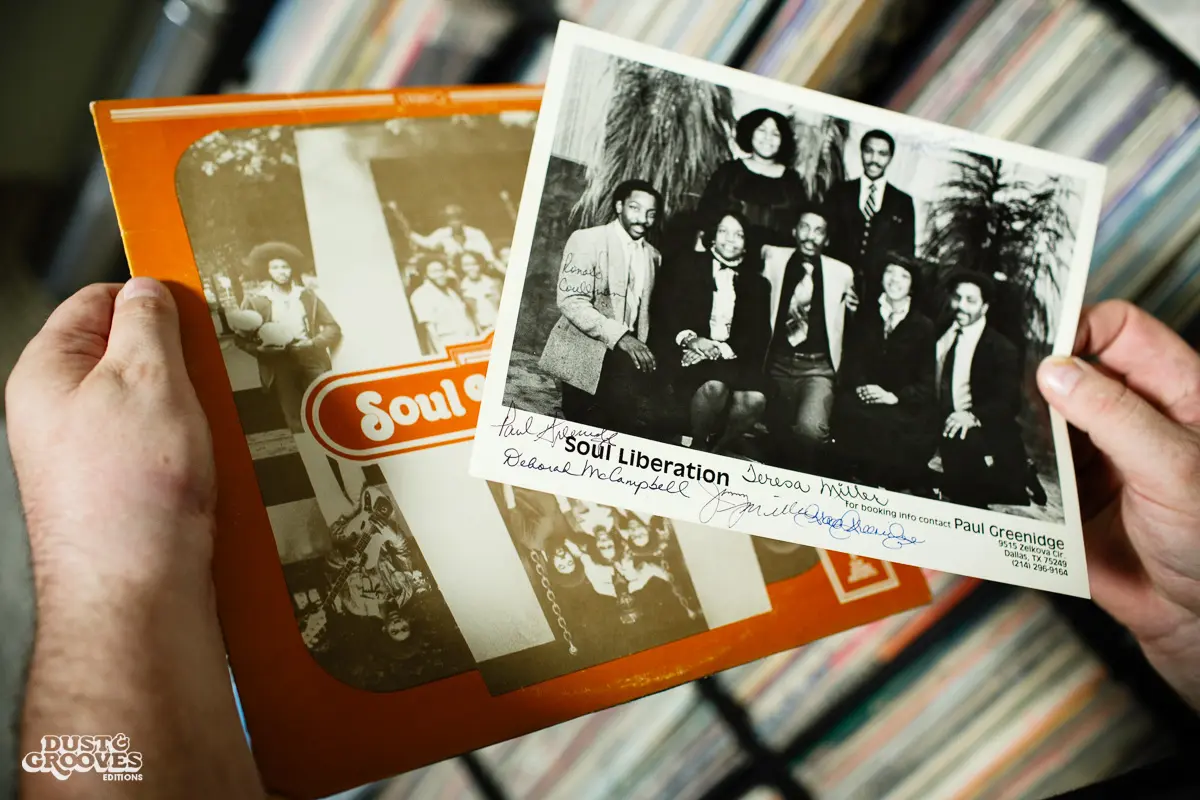
Soul Liberation – Self-titled. “Very solid uptempo soul with jazzy overtones; the signed promo shot really sweetened the deal the day I brought this home!”
Do you still dig?
I dig all the time, both out in the field and online. Dusty finger diggin’ is absolutely essential for any serious collector of vintage records. There’s still a lot to discover, so getting out there and delving into the crates is a daily operation. There’s no real guide as to how to dig and how frequently to get out into the wild. Most of the time, it’s pure luck on what’s out in the racks when you hit your locations. So persistence is the key, along with an ever-growing knowledge. If I’m not out and about, I’ll dig online. These days, it’s an essential tool in a digger’s arsenal, so I spend hours every day scouring what the internet offers.
Is there sampling in gospel music?
This question can be answered twofold. Nowadays, there’s a raft of producers scouring the gospel cuts for samples. Beatheads like The Purist, Beatnick Dee, and The Alchemist are just a few of the people who spearheaded this movement. Reaching back to earlier years, many gospel artists borrowed hooks from secular recordings.
The main riff of Aretha Franklin’s “Chain of Fools” was lifted and became the hook line for Rev. E. Fair’s “Pains of Life.” Instead of “Chain, chain, chain,” the lyrics are adjusted to “Pain, pain, pain.” Isaac Hayes’ rhythms were borrowed frequently. “Do Your Thing” was lifted by CK Brady Avent Singers in “Do it for the Lord.” The Mighty Christian Soldiers also turned it into “Do it for the Lord.” This practice of borrowing secular riffs from secular tunes became quite common, probably in an attempt to extend the religious message outside of the church and appeal to a wider, younger audience. If the music sounded familiar, then the message might have a chance of finding new ears.
Do you have any favorite non-gospel records in your collection?
I’d like to throw in a curveball here. It’s a track that’s nestled away on a forgotten LP called I’ve Made Up My Mind by Herman Adelsohn, recorded for the Brunswick label. Specifically, it’s the tune “Take a Look at Me” that I find myself listening to over and over again. The most amazing thing about this record is that it was produced by soul legends Carl Davis and Eugene Record and directed by Willie Henderson. That’s a whole lotta soul on a cut that’s very much under everyone’s radar. Seek it out. The string section alone will wash you away.
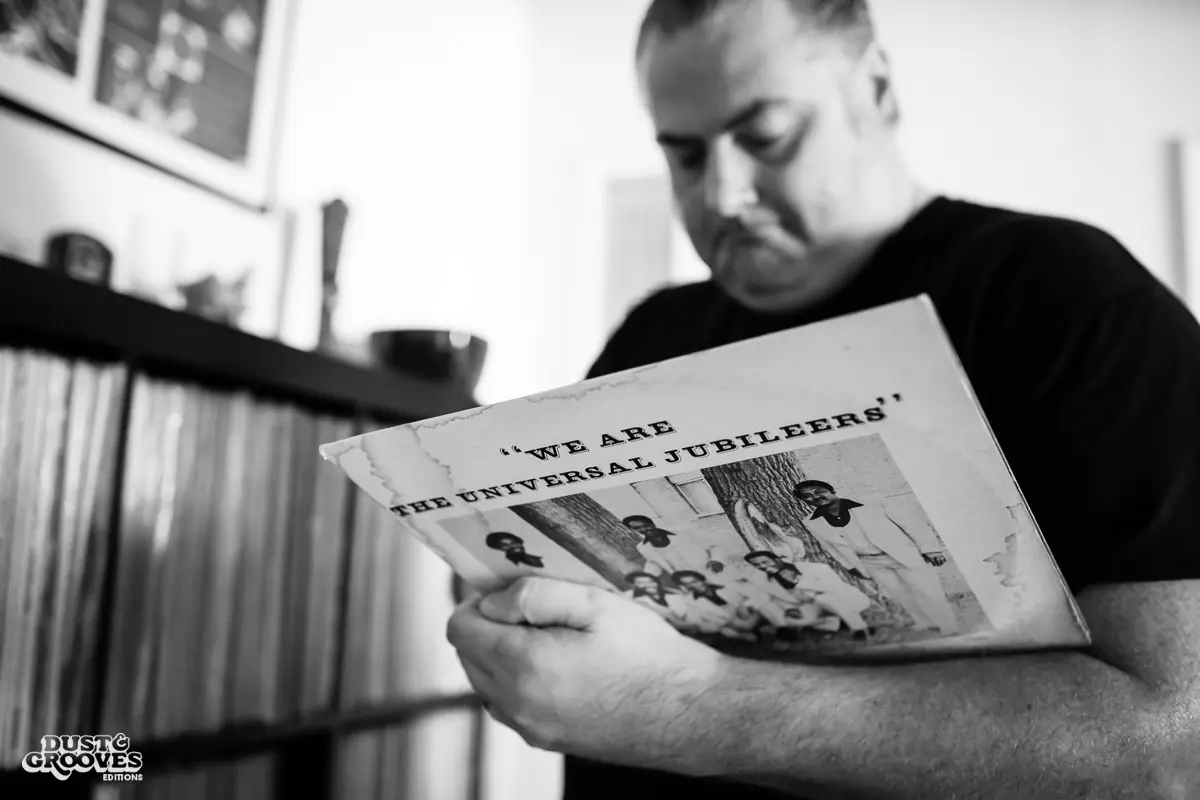
The Universal Jubileers – “We are the Universal Jubileers.” “Rare and exciting gospel funk out of Chicago. Essential dancefloor business!”
Do you have a comfort record? Something you can always come back to?
If I were to choose a gospel 45, I’d have to go with Little Shadows “On Judgement Day.” It has a sublime vocal performance that makes me stop everything and listen. The Supreme Jubilees’ It’ll All Be Over is a clear winner for a gospel LP. It features some of the most stone-cold grooves you could ever hear. Simply beautiful. Away from gospel, there’s so much I’d turn to out of the LP crates, but on the regular, I always come back to Charles Stepney productions, but I’d also be happy on a desert island with my David Axelrod stack and a whole bunch of Gil Scott Heron too, no doubt!
Do you have any tips for people just starting out? Tricks of the trade? Rookie mistakes to avoid?
Don’t be afraid to make your collection personal. Cultivate your own taste and explore as many genres as you want to. My choice is my own, and I can remember what I bought, where I bought it, and what each track means to me. There isn’t a single solitary collector or historian who knows everything, so start by looking at playlists of DJs you admire or what other diggers are collecting, but from that root, plant your own seeds. Make your taste your own, but most importantly, enjoy the ride. Music is emotion, so make sure you feel it and get the most out of your collection.
Who would you like to see next on Dust & Grooves?
On the gospel side of the tracks, I’d love to see Kevin Nutt, the DJ/presenter behind the jaw-droppingly good Sinner’s Crossroads on WFMU. It’s an essential point of reference for me and many others who collect the genre. I’d also like to see DJ Snowboy’s collection, which I’ve known for years. He was part of the original “Deep Funk” club night crew and has a phenomenal knowledge of all things related to jazz. Plus, he’s even got a penchant for Rockabilly, so it would be fascinating to see the depth of what resides on his shelves.
Greg, a British disco-expert living in LA, hosts four radio shows to share his collection: The Divine Chord Gospel Show, 45 Live, Time-Less, both broadcast on Dublab.com (Los Angeles, CA), and Divine Soul on Mi-Soul Connoisseurs (London, UK).


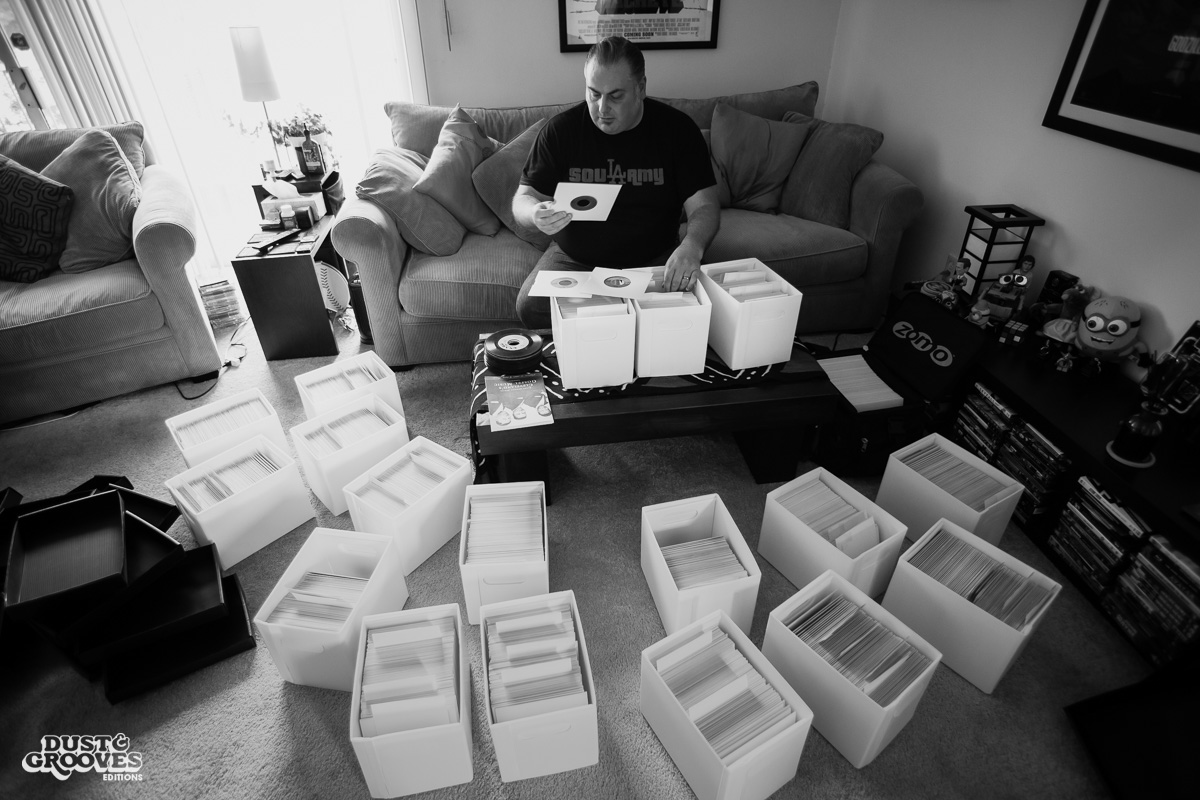
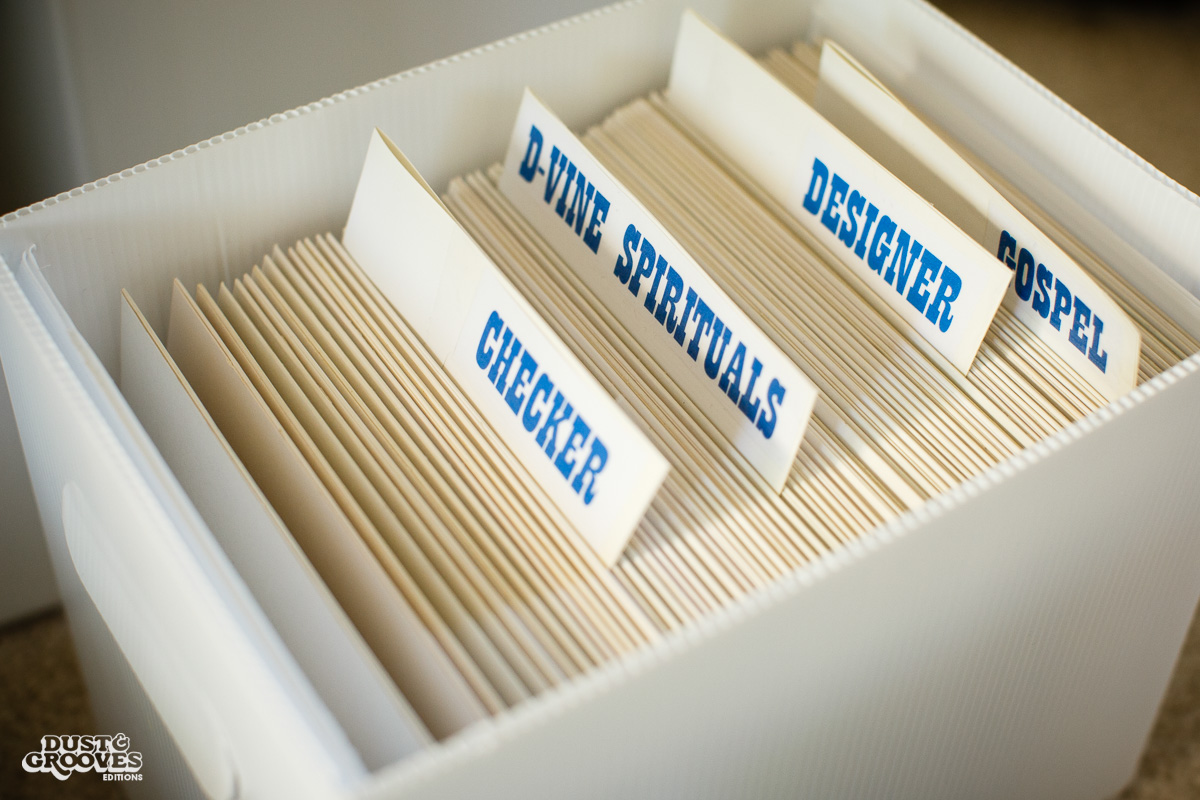
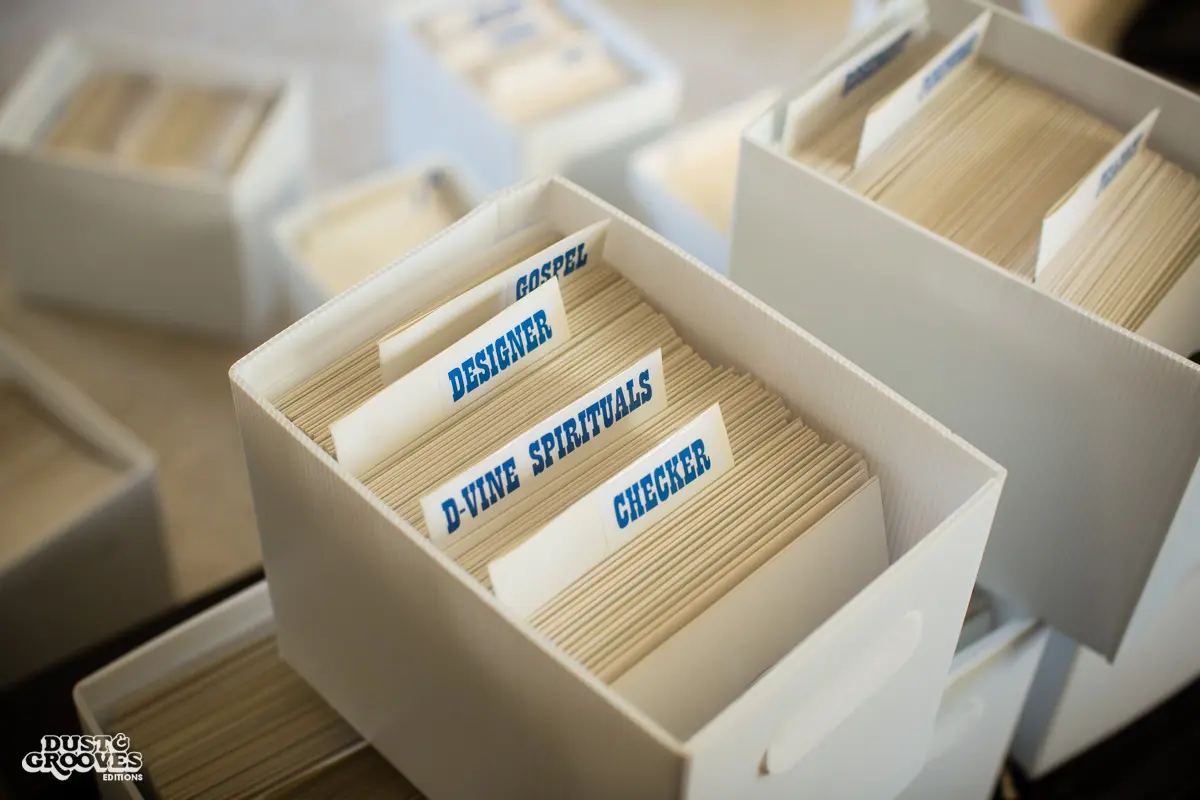
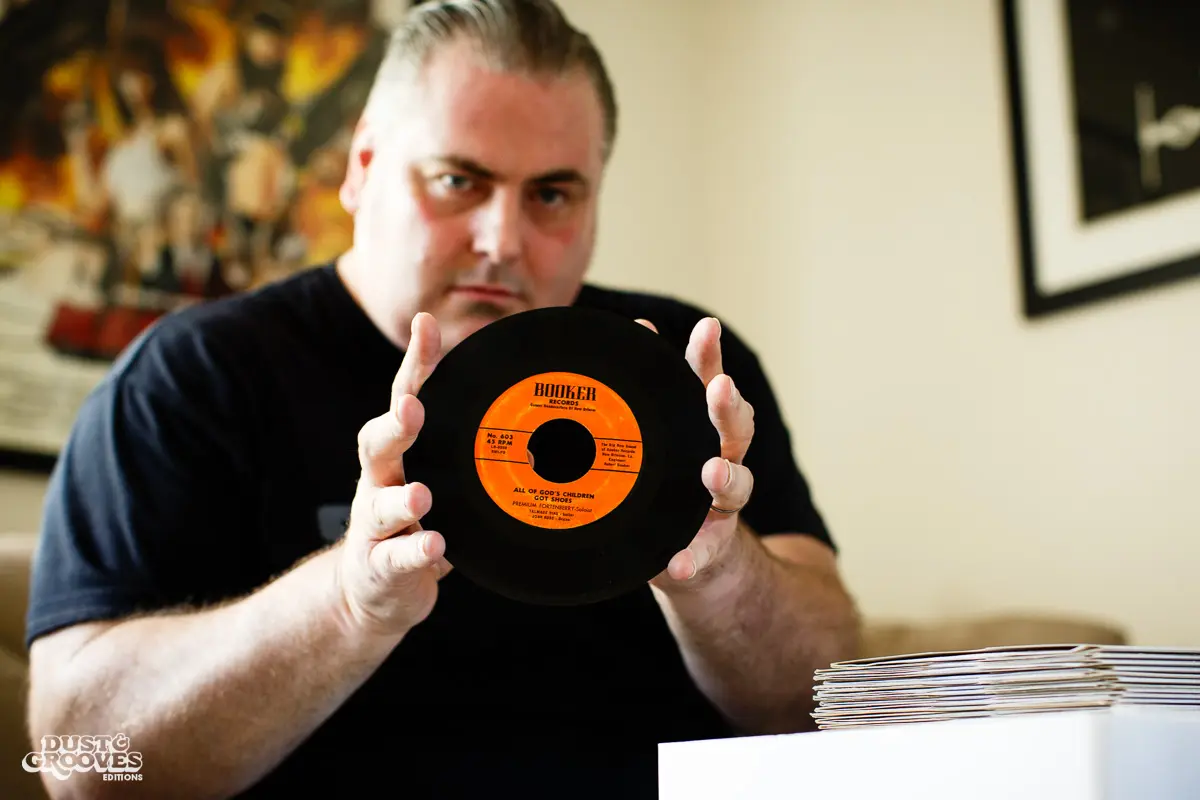

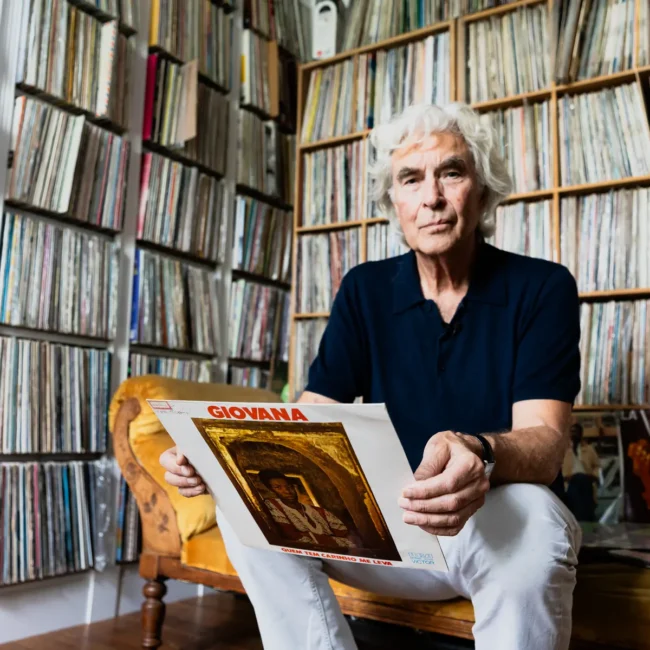
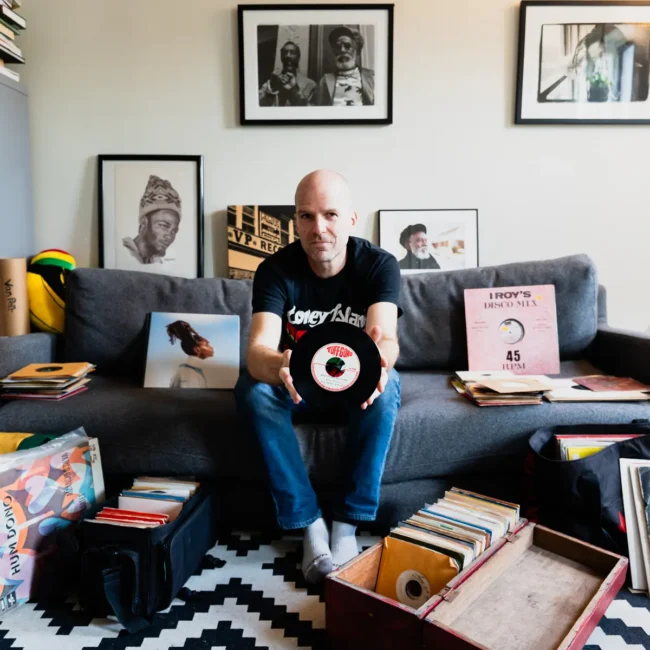
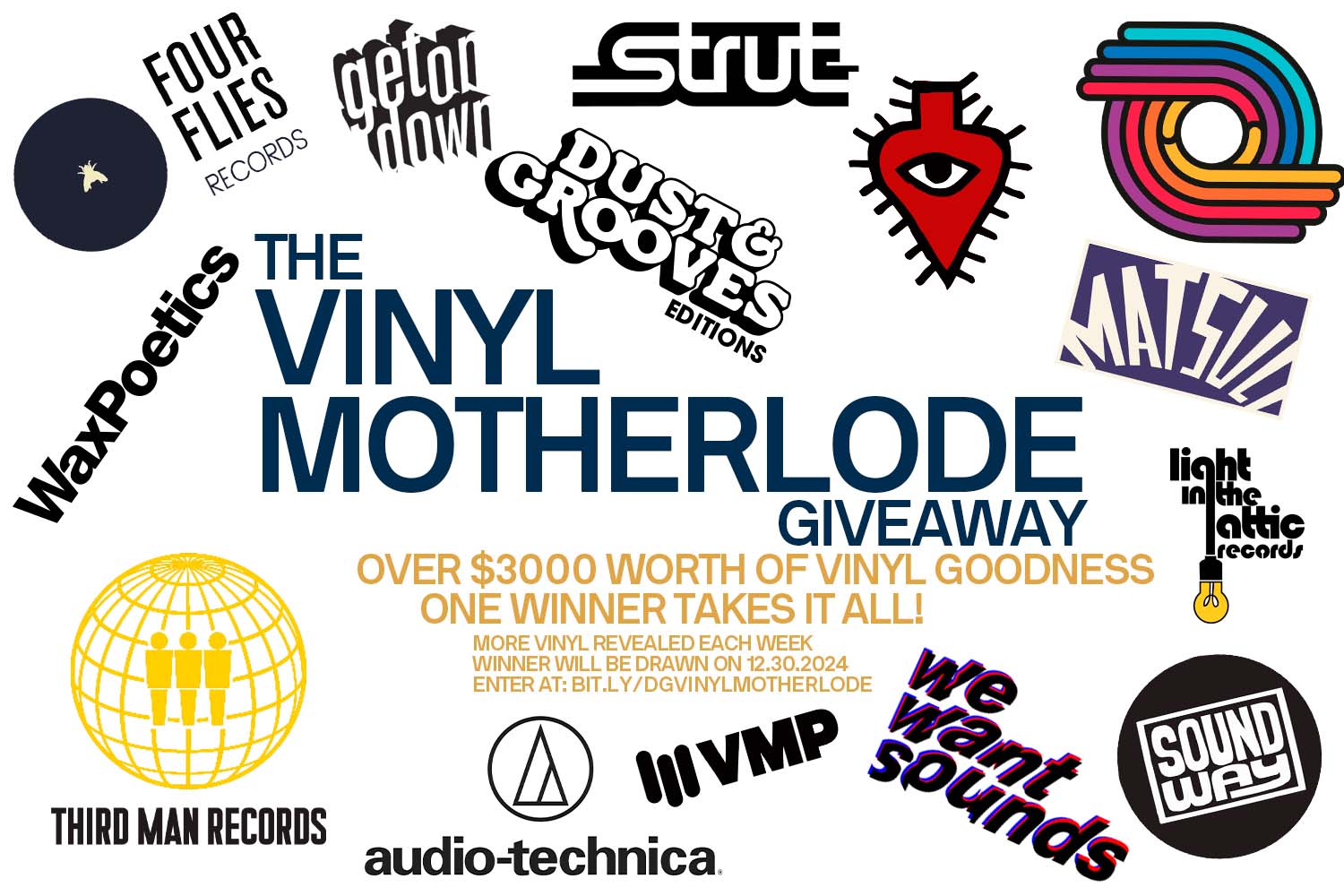
2 Comments
Simon Norfolk
Superb stuff Greg
ramon
nice one, with a very enjoyable mix from an oft overlooked genre.